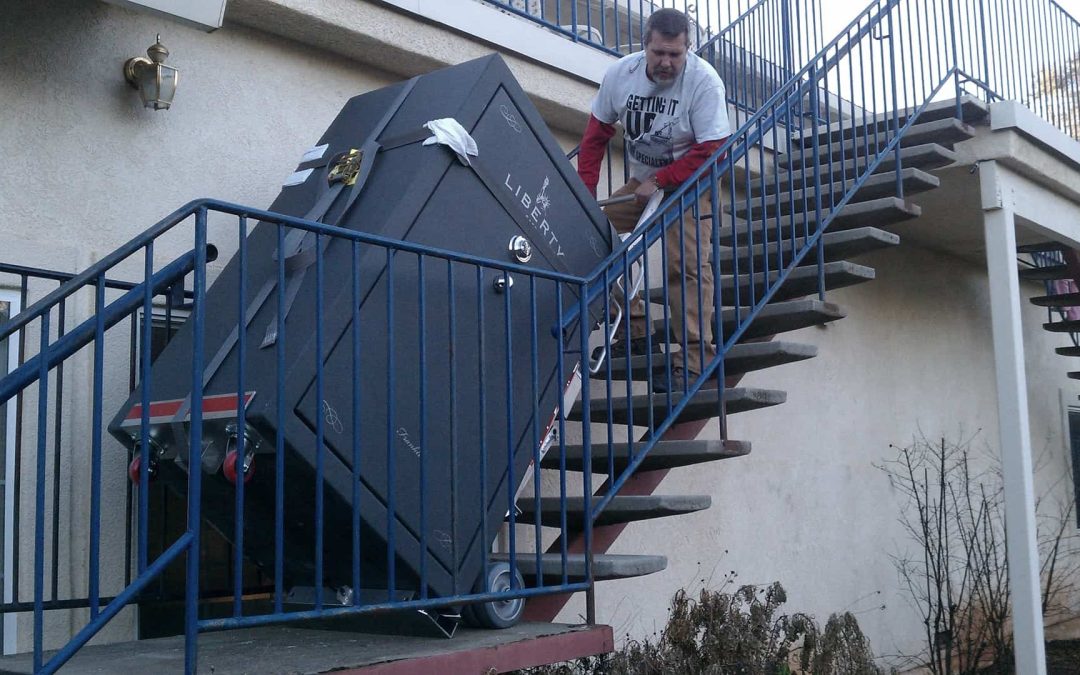Moving a safe upstairs can be a challenging and potentially dangerous task. It requires proper planning, preparation, and execution to ensure a safe move safely and without damage to the property or individuals involve. Here are some steps to follow when moving a safe upstairs:
Assess the weight and dimensions of the safe Before attempting to move . The safe up the stairs, it is essential to determine the weight and dimensions of the safe. This information will help you determine whether you have the necessary equipment and manpower to move the safe safely. Additionally, it will also help you plan for the appropriate route to take when moving the safe.
Plan the route for moving the safe Before you start moving the safe. It is essential to plan the route you will take to get up the stairs. The route should be free of obstacles, and the stairs should be wide enough to accommodate the safe. You may need to measure the stairway and make sure the safe can fit through the space. Consider any turns or narrow spaces that could be difficult to maneuver the safe through.
Prepare the necessary equipment and tools Moving a safe requires specialized equipment and tools. Including a heavy-duty dolly, straps or ropes, moving blankets, and a sturdy set of stairs. You may also need to use furniture pads or plywood to protect the stairs and prevent damage to the walls or floors. It is also essential to have gloves, safety glasses, and a back brace for protection.
Gather a team of helpers Safe moving is a task that should not be done alone. You will need to gather a team of helpers to assist you in moving the safe up the stairs. Make sure each member of your team is aware of the task at hand and that they have the necessary equipment and tools to help move the safe. If possible, select individuals who have experience in moving heavy objects.
Clear the path Before you start moving the safe, it is essential to clear the path to the stairs. Remove any loose items or furniture that could interfere with your ability to move the safe up the stairs. This will prevent any tripping hazards and ensure the safety of those involved in the move.
Secure the safe to the dolly Once the path is clear, it is time to secure the safe to the dolly. Make sure the dolly is rated to handle the weight of the safe, and that it has straps or ropes to secure the safe in place. Use moving blankets or furniture pads to protect the safe during transport.
Begin the move With the safe secured to the dolly and the team in place, it is time to begin the move. Start by tilting the safe back onto the dolly and securing it in place. Make sure to keep the safe as close to the dolly as possible to maintain stability during the move. Use the straps or ropes to keep the safe from shifting.
Move slowly and carefully When moving the safe up the stairs, it is essential to take your time and move slowly and carefully. Rushing the move can lead to accidents and damage to the property. Use a hand-over-hand technique to move the safe up the stairs, keeping it as close to the stairs as possible. Make sure the team communicates clearly and moves together to prevent any mishaps.
Take breaks if necessary Moving a safe can be exhausting work. It is important to take breaks if necessary to prevent fatigue and ensure the safety of the team. You can also switch out team members to give others a chance to rest.
Secure the safe in place Once the safe safely move up the stairs, it is important to secure it in place. Use straps or ropes to keep the safe from shifting, and make sure it is securely anchored to prevent any accidents.

